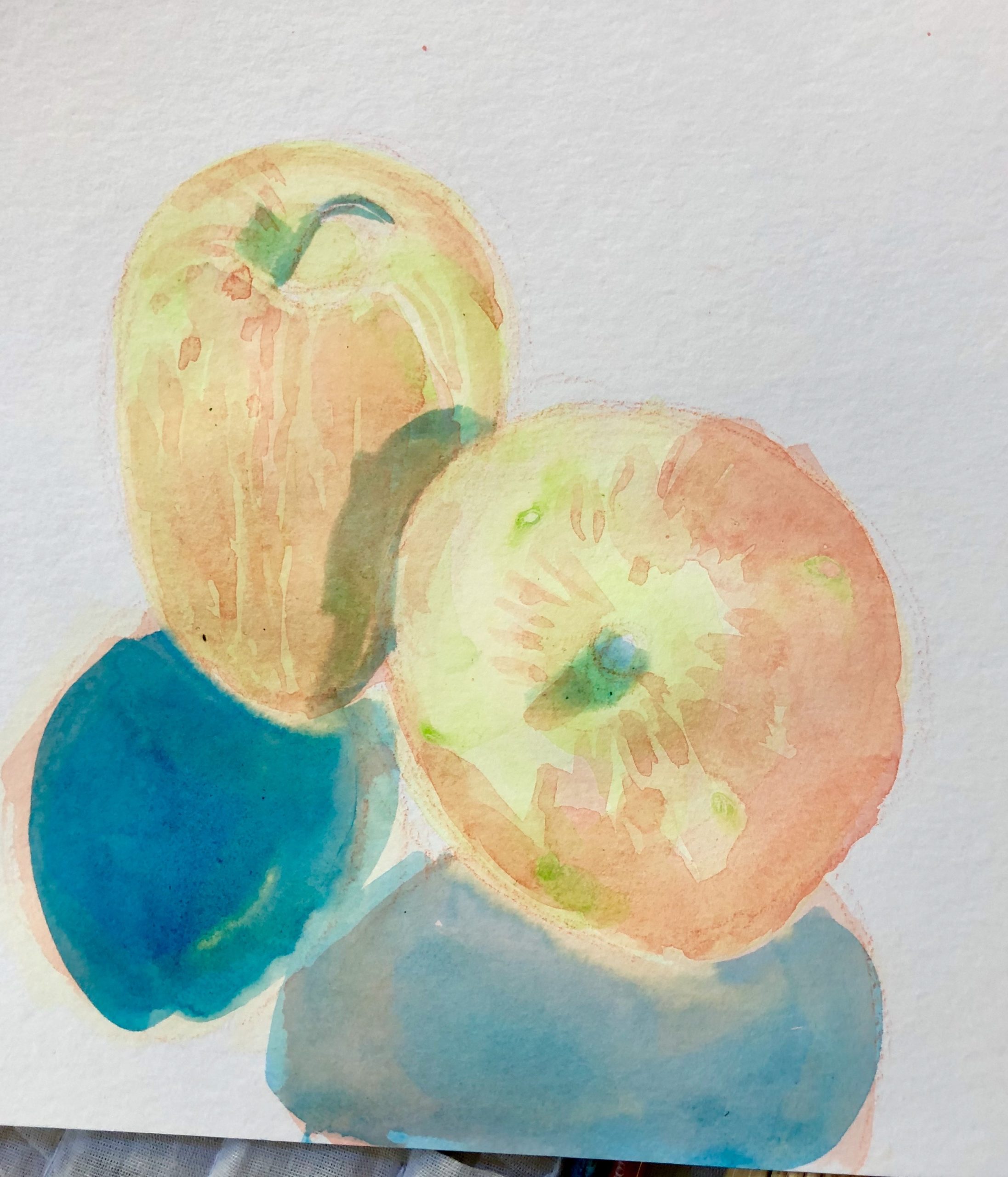‘
Painting like Cezanne
‘Paul Cézanne was a French artist and Post-Impressionist painter whose work introduced new modes of representation and influenced avant garde artistic movements of the early 20th century’. Wikipedia
Our instructor Caroline Marsland demonstrated and talked of the way Paul Cezanne painted. He looked for structure and forms in his paintings with the shapes and tonal values. He moved away from from browns and earth colours to working in saturated colours.
He often would start with drawing the overall shape, often in a dark line and then laid each colour next to each one without blending. At times the paint was thick to add texture. With the highlights he would not use white as it looks flat so adding a little warm colour like pale yellow would warm it.
More of Cézannes history is as follows.
‘While his early works are still influenced by Romanticism – such as the murals in the Jas de Bouffan country house – and Realism, Cézanne arrived at a new pictorial language through intensive examination of Impressionist forms of expression. He altered conventional approaches to perspective and broke established rules of academic art by emphasizing the underlying structure of objects in a composition and the formal qualities of art. Cézanne strived for a renewal of traditional design methods on the basis of the impressionistic colour space and colour modulation principles. Cézanne’s often repetitive, exploratory brushstrokes are highly characteristic and clearly recognizable. He used planes of colour and small brushstrokes that build up to form complex fields. The paintings convey Cézanne’s intense study of his subjects. Both Henri Matisse and Pablo Picasso are said to have remarked that Cézanne “is the father of us all”.
His painting provoked incomprehension and ridicule in contemporary art criticism. Until the late 1890s it was mainly fellow artists such as Camille Pissarro and the art dealer and gallery owner Ambroise Vollard who discovered Cézanne’s work and were among the first to buy his paintings. In 1895, Vollard opened the first solo exhibition in his Paris gallery, which led to a broader examination of the artist’s work.’ Wikipedia



